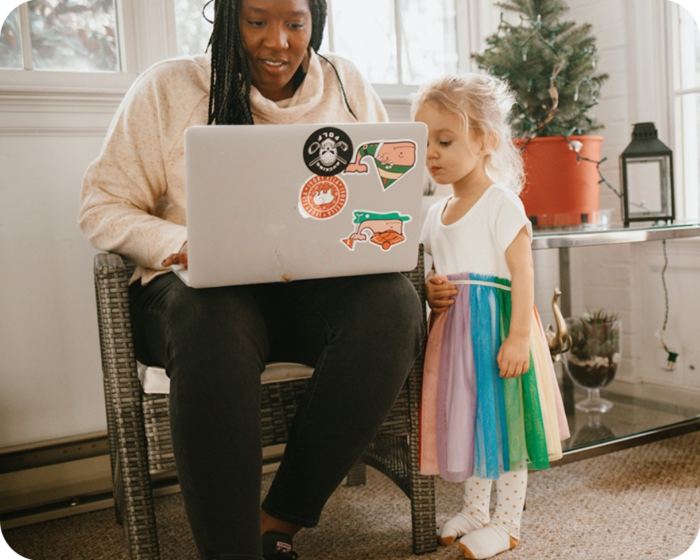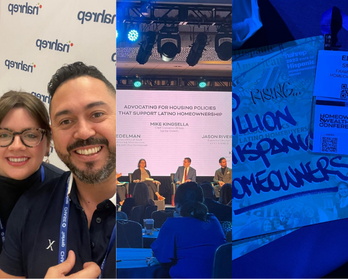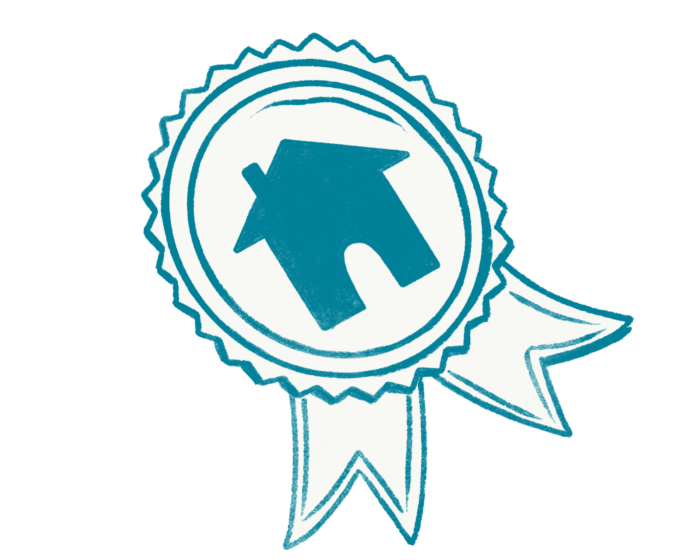So, you want to buy a home … but you’re not sure how much house you can afford. Maybe you’re not sure if you can afford to buy one at all.
Well, we’ve got finding a realistic price tag down to just 6 steps, and you don’t even have to do any math. If you already know your basic budget numbers, it might take you as little as 15 minutes.
The thing is, even the most sophisticated affordability calculator on the internet is only as good as the numbers you plug into it. So first, we’ll help you do a good job gathering the numbers you need. Then we’ll link you to our favorite calculator.
What makes it our favorite? A lot of the affordability calculators out there are too basic to be realistic, while others are too complicated for that just-getting-an-idea stage. We think this one is about right. Plus, it’s pretty.
Ready to get started? When we’re done, you’ll have a good sense of your how much you can afford — and whether you’ll qualify for a mortgage. Grab a pen and paper, and let’s get to work.
1. How much money do you have to work with?
Find your basic dollar figures and note them. You’ll be plugging them into the calculator in a few minutes. Before you buy a home, it’s critical that you put together a sound budget. If you haven’t already done that, download our monthly budget worksheet to get started. But for this exercise, you need just four numbers:
$ Monthly housing expense
What are you paying right now in rent? Would you be comfortable paying more? Comfortable is the key word. Remember that as a homeowner, you’ll need to continually save for ongoing maintenance and repairs, and chances are, you’ll still want to go out for sushi burritos once in a while.
$ Gross annual income
Include only what the earners in your household can really count on, before taxes.
$ Monthly debt payments
Add it all up. You’re paying more than the minimum on any credit card debt, right? (We’ll show you the math on that some other time.)
$ Down payment
How much have you saved for a down payment? Twenty percent is great, because you won’t have to add mortgage insurance to your monthly expenses. Yet 20 percent is definitely not the norm. Some loan programs let you put as little as 3 percent down, and there’s a lot of down payment assistance out there.
Heads-up: You also need to save for closing costs — all the expenses involved in a real estate transaction. They vary a lot from state to state, even city to city, but the average for a $200,000 home is about $7,000. (Yeah, ouch.) Subtract that from your savings to get a number closer to what you actually have for a down payment. Some homebuyers can get closing cost assistance, but let’s not count on that right now.
This step was the hardest. You’ll coast through the rest!
2. What’s your credit score?
Find your estimated credit score and note it. You can find a free score online, but if you go that route, your info might get sold. Plus, you won’t be getting it from the scoring company that most banks use, known as FICO. For a few bucks, you can get a FICO score (plus your credit reports) at myFICO. It will still be an estimate — scores and scoring models are always changing. You have to start a subscription for $5, but you can cancel it when you’ve got what you want.
Your credit score can have a big impact on the interest rate lenders will offer you, and in turn on how much house you can afford. Here’s the short story:
750+ You should qualify for a variety of mortgages, with the best interest rates and the lowest fees.
680+ You’re likely to qualify, and with a good interest rate and standard fees.
600 – 680 You might qualify, but you’ll probably have fewer loan options and pay a higher interest rate and fees.
350 – 599 You probably won’t qualify for a mortgage, except in some special cases.
Is your score below 600? This is not a permanent condition! There’s a lot you can do to raise it.
3. What interest rate will you get?
Credit score in hand, consult a chart like this one at myFICO and note the interest rate next to your score. Make sure you’re on the “30-year-fixed” tab. We like this chart because it adjusts for your credit score and state — choose your state from the “location” dropdown menu. Ignore the “loan amount” field. Besides the fact that you don’t know it yet, all you want at the moment is the interest rate banks might offer you. Banks consider a variety of criteria, so this too is an estimate.
The lower your interest rate is, the lower your monthly payment will be for the same house.
4. What will your annual property taxes be?
Search your city’s website for the residential property tax rate and note it. Some city websites make it hard to find this figure; you might have to do a more general search. Be careful not to come away with a commercial property tax rate or a sales tax rate. And don’t use a state average — property tax rates can vary significantly from city to city.
You might find your tax rate expressed in dollars per $100 or $1,000 of appraised value. For the calculator, you want the percentage for the full appraised value. To get that, divide the rate in dollars by $100 or $1,000, or whatever it is. For example:
$15.95 ÷ $1,000 = .01595 (or 1.595%)
Many first-time homebuyers don’t realize just how much homeowners pay in local property taxes. The national average is more than $2,000 each year, and it can go much higher. That adds a lot to your monthly payment.
5. Will you pay condo or HOA fees?
Buying a condo or HOA property? Estimate the monthly fee and note it. Monthly fees are often $200 to $400 but can be much higher in upscale communities. To get a sense of what you might pay, browse listings that interest you — the fees are usually disclosed.
Properties governed by community associations charge monthly or quarterly fees for common expenses. Those properties include condos, typically governed by condo associations (CAs) or homeowners associations (HOAs), but also growing numbers of single-family homes that are part of developments governed by HOAs.
6. Plug your numbers into the calculator
Go to the calculator at Society of Grownups and plug in your numbers. Two numbers are already filled in for you: a standard loan term of 30 years, and the typical annual homeowners insurance bill of $800.
Condo note: Most condo fees include insurance that covers the exterior of the building and common areas. So if you buy a condo, your homeowners insurance will cost less than for a single-family home.
Congratulations, you have a price tag!
The big number at the top is your estimated maximum price tag. How much house can you afford?
We want to emphasize the word maximum. The price tag you’ve calculated here is most likely on the high side of what you can afford, because it doesn’t factor in all the costs of owning a home. The biggest thing is repairs and maintenance.
As for the other numbers:
- Monthly payment breakdown. The pie chart illustrates what’s referred to as PITI: principal, interest, taxes, and insurance. You’ll notice “PMI payments” that you didn’t plug in. That’s private mortgage insurance, required for conventional loans when the down payment is less than 20 percent.
- Total payment. Just below the pie chart you’ll see the estimated payment you’ll make each month at this price point. How does that number feel?
- Debt-to-income ratio: Important! In most cases, this number needs to be 36 percent or less. It’s very hard (but not always impossible) to qualify for a mortgage if your total monthly debt payments, including your total mortgage payment, are more than 36 percent of your gross income.
Ready for next steps?
Take the Framework® Homebuyer Education Course. Because you don’t know what you don’t know, and when you educate yourself, you’ll make decisions with confidence every step of the way. Most people finish the whole course in just 4 to 6 hours. Plus, when you pass, you get a certificate that can qualify you for down payment assistance programs that help first-time buyers afford a home.
Find a great real estate agent. Strangely enough, it’s kind of like online dating. Check out our 10 tips.
Start a relationship with a homeownership advisor. Before, during, and after your purchase of a home, our nonprofit advising partners are standing by to help with unbiased, expert advice specific to your situation. And it’s usually free.
Can’t afford a home (yet)?
Remember, almost every homeowner was in that place at some point. Your next step is to make a plan for shifting the balance in your favor.




